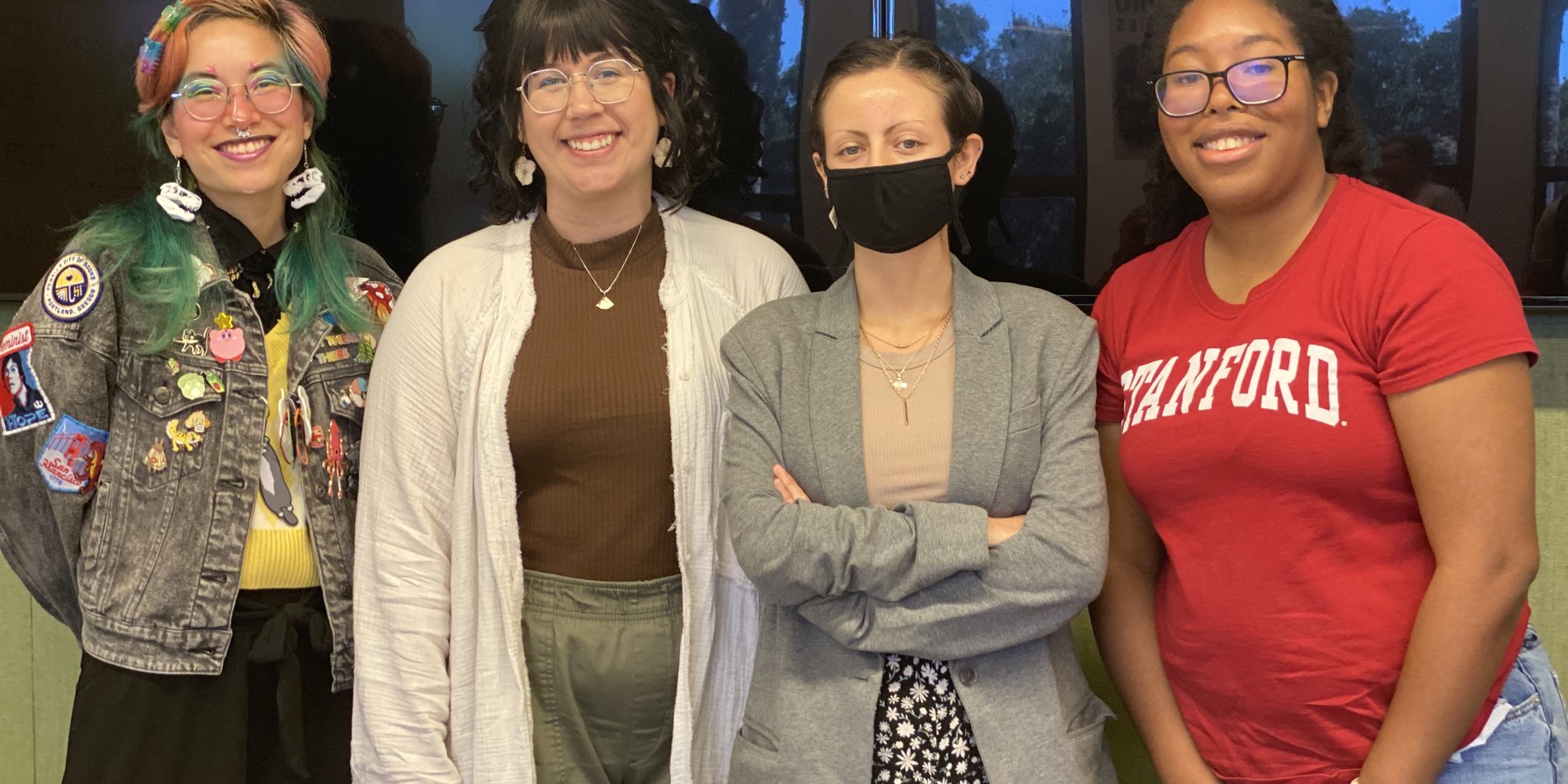Stanford Historical Society President's 2021-2022 Annual Report
For Stanford Historical Society (SHS), this past year has been one of renewal. Just as Stanford University resumed many of its routines on campus after more than a year of remote work and study, SHS began its return to a full calendar of programs and activities. It is, however, a “new normal" that includes both campus-based programming and an ongoing commitment to our expanding online communities.
The most visible sign of our post-pandemic recovery has been the return of events on campus. The Tours and Events Committee co-ordinated and led tours of Memorial Church and the Main Quad, the Stanford Dish, and conducted a guided tour of Stanford trees. The committee also played a key role in the History in Community conference, held on May 12-13, sponsored jointly by SHS and the University Archives and supported by a grant from Santa Clara County. The two-day event featured discussions on gathering and preserving community history, architectural conservation, and archiving local histories. More than 200 participants from Stanford and the surrounding communities attended, making it one of the largest in-person events in recent memory.
The Oral History Program continued to add valuable resources to the university’s archives, completing 139 new interviews comprising nearly 200 hours of recordings. The program continues to gather the insights of “official” Stanford—its leaders and faculty—but also is expanding efforts to gather the memories and impressions of diverse voices. Efforts this year included collaborations with Disability at Stanford, and with Native American and Asian American alumni. Oral History also returned to Reunion Weekend last October, with program staff, volunteers, and students conducting oral history interviews with scores of alumni. The recordings and transcripts of the interviews will be placed in the permanent collection as a record of how student life at Stanford has changed over the years.
Our library of publications also continues to grow. This year we anticipate completing two important publications, both of which will be issued this fall. Voices of the Hennessy Presidency: Collected Interviews with Stanford University Leaders, 2000-2016 is a collaboration with Eric Knight, Executive Dean and Professor of Strategic Management at Macquarie Business School, featuring interviews with campus leaders during Stanford President John Hennessy’s tenure. We also anticipate the fall publication of Stanford’s Wallace Sterling: Portrait of a Stanford Presidency by Roxanne Nilan and Karen Bartholomew, which provides a detailed account in text and photographs of an important chapter in the university’s growth and development.
SHS programs this year ranged from a fresh-air tour of Sam McDonald Park in San Mateo County to online seminars on diverse topics such as the formation of the Center for Comparative Studies of Race and Ethnicity with Al Camarillo; the status of Stanford’s campus design and buildings with University Architect David Lenox; the experiences of some of Stanford’s first Black football players, including Al Wilburn, Gene Washington, and Hillary Shockley; as well as our final program of the year, Who Killed Jane Stanford?, with Professor Richard White. Our online programs continue to reach new audiences far from campus. More than 1,600 people attended virtual programs during the year, one-quarter of whom had never before attended an SHS event.
With such a complex and diverse set of programs and activities, SHS relies heavily on its network of board members and volunteers. Behind the curtain, so to speak, we depend on the Governance, Finance, Marketing Strategy & Communications, and Membership & Development committees to keep all the plates spinning. We owe the people on these committees a large debt of gratitude and appreciation. Our thanks also go to Charlotte Kwok Glasser, our tireless Administrative Officer.
SHS welcomed 53 new members so far this year. Members and supporters of SHS make our work possible. The university supports roughly half of the annual operating budget of SHS; the rest comes from people who value the unique charge that SHS has been given, to keep the history of the university alive and accessible. We look forward to continuing this mission in the coming year, and we are deeply grateful for the support of our members.


